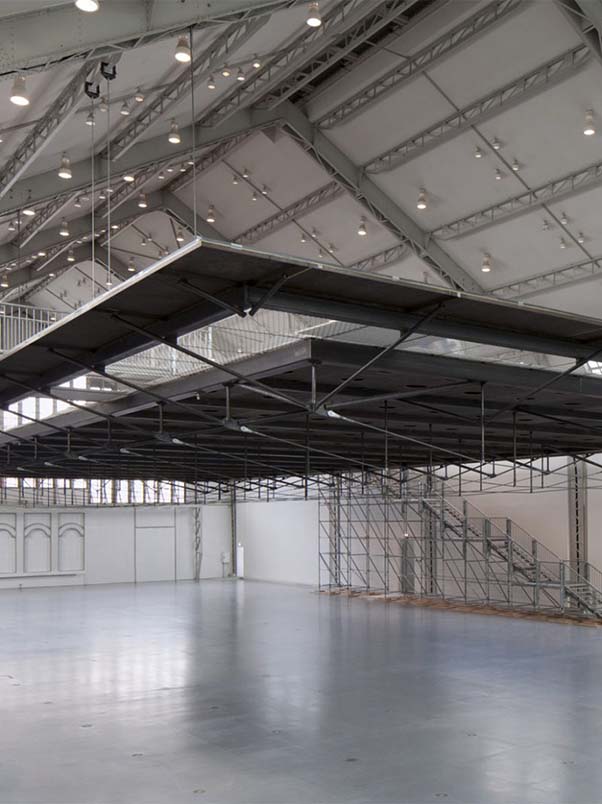
Bettina Pousttchi – Meet the Artist
Born in 1971, Bettina Pousttchi 1 is a German-Iranian artist, living and working in Berlin. She is known for her sculptures, videos, and photography, often involving architecture in urban and historical contexts. Her site-specific 2 installations explore systems of time and space from a large-scale perspective.
World Time Clock
Currently living in Berlin, Pousttchi is best known within the art world for her World Time Clock project, which she started in 2008. World Time Clock involves the artist flying around the world and taking pictures of time zones of different places by photographing clocks in public spaces at precisely five minutes to two o’clock in the afternoon. This series features twenty-four images of various world time zones, including far-flung places such as Tashkent, Mexico City 3, and Bangkok 4.
Pousttchi’s World Time Clock images depict what she termed “imaginary global synchronism.” To some extent, the series also represents colonial power’s effect, for instance, showing how imitations of the famous Big Ben in London 5 display the public time in as distant places as Cape Town, Mumbai, and Sydney 6.
The Hirshhorn Museum in DC 7 is an echoing setting for an artwork concerned with the worldwide structuring of time. It is the US capital, DC, where an international conference settled upon a single prime meridian, which led to the system of time zones worldwide that Bettina Pousttchi voyaged to create her World Time Clock.
Her photographs are attached to the circular part of the building, on which can be charted both the sun’s daily path and the face of a clock itself. The progressive shift of the light and the shadow during the day emphasizes the turning of the earth and astronomical time, a distinct contrast to the politically regulated time proposed by Pousttchi’s World Time Clock.
This work, World Time Clock, hints just how much architecture plays a central role in Pousttchi’s creativity, something that can also be seen in Echo (2009/2010).
Echo
In Echo, the artist covers all the four walls of the Temporäre Kunsthalle Berlin with a photograph installation showing an afterimage of the remnants of Palast der Republik (Germany for Palace of the Republic).
This palace served as the seat of the East German parliament back in the days of the Cold War and featured two huge halls, a theater, art galleries, a bowling alley, and restaurants. The palace was completed in 1973 at the Hohenzollern Palace site but now has been taken apart to make room for the proposed construction of Stadtschloß. However, Pousttchi reiterates that her work Echo is far from a true-to-life or true-to-scale reconstruction of the Palace of the Republic, as reported by her press release:
“The motif for the circumferential black-and-white photograph is comprised of 970 individual posters. The depiction, which reduces the historical façade to its essential structural components, is based on archival pictures. Employing image processing and further elements, the artist creates several disturbing moments. Digitally generated lines are reminiscent of CCTV cameras or early TV images – or a furtive view through the slats of a lowered blind. With this mise-en-scene, Pousttchi reflects on the individual’s ability to remember and also on the suggestive qualities of the medium of photography. As an alleged simulated historical architecture, Echo directly references the changes in the surrounding urban landscape.”
The echo represents an altered reality. The twenty-four color images used in this series altered the physical reality of Berlin Schlossplatz. By taking photos of the building, the artist documents another reality that transcends sculpture, photography, and architecture in a very profound way.
The City
Her photo installation titled The City also features the theme of architecture. In this installation, Pousttchi condensed a city skyline comprising ten skyscrapers that used to be the tallest buildings at some stage in their lifespan. The motif of this installation is again furnished with the artist’s signature black and white raster, conjuring the feeling of image alteration.
This installation may also be referencing the city of Wolfsburg, which was founded in the hope of providing housing for workers at the then newly-established Volkswagen manufacturing plant. The city was initially called Stadt des KdF Wagens Bei Fallersleben, but it changed its name after World War II to Wolfsburg.
Speaking about the reference of Wolfsburg in her The City installation, Pousttchi said:
It is precisely this circumstance [the fact that Wolfsburg is relatively a young city which initiated my deliberations. I believe that Wolfsburg and its history are an interesting place to think about concepts as nation, history, and modernity. Skyscrapers are the architectural icon of modern times.
In 2014, Pousttchi was a recipient of the coveted Wolfsburg art prize “Junge Stadt sieht Kunst”, a prize accompanied by her exhibition at the Stadtische Galerie as well as plenty of coverage and publication.
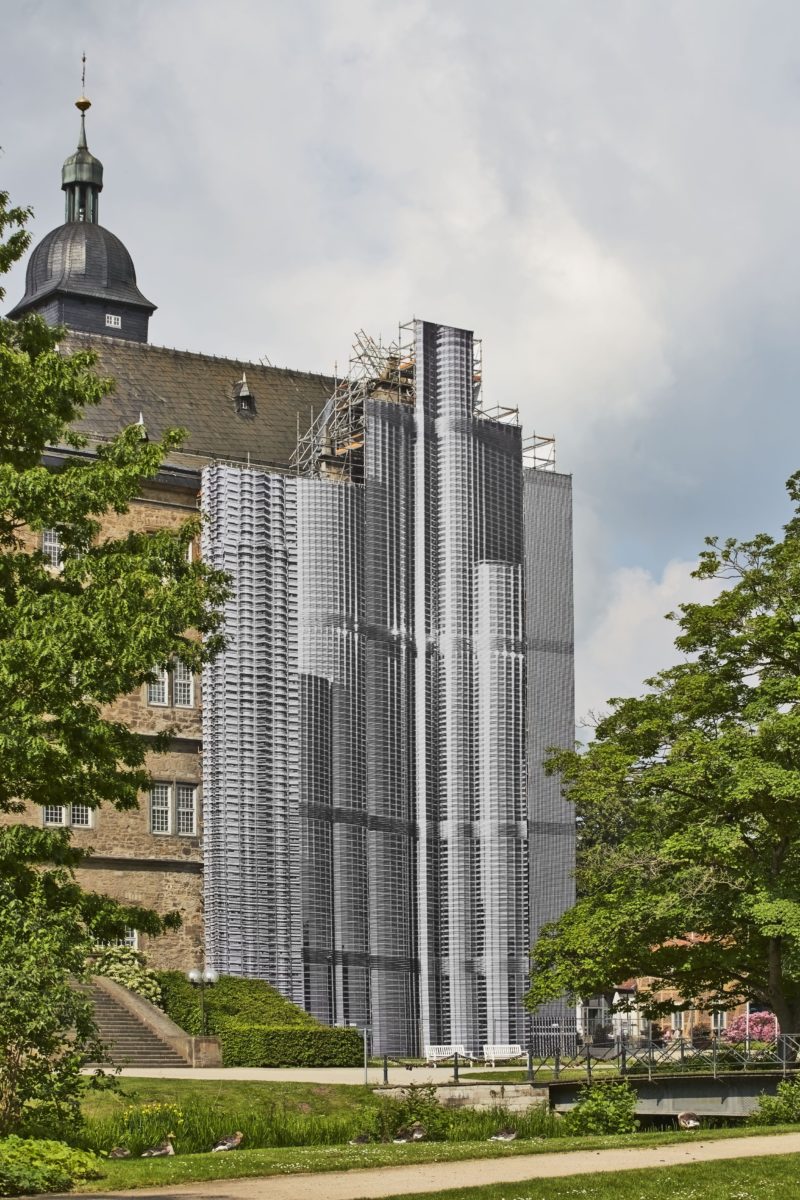
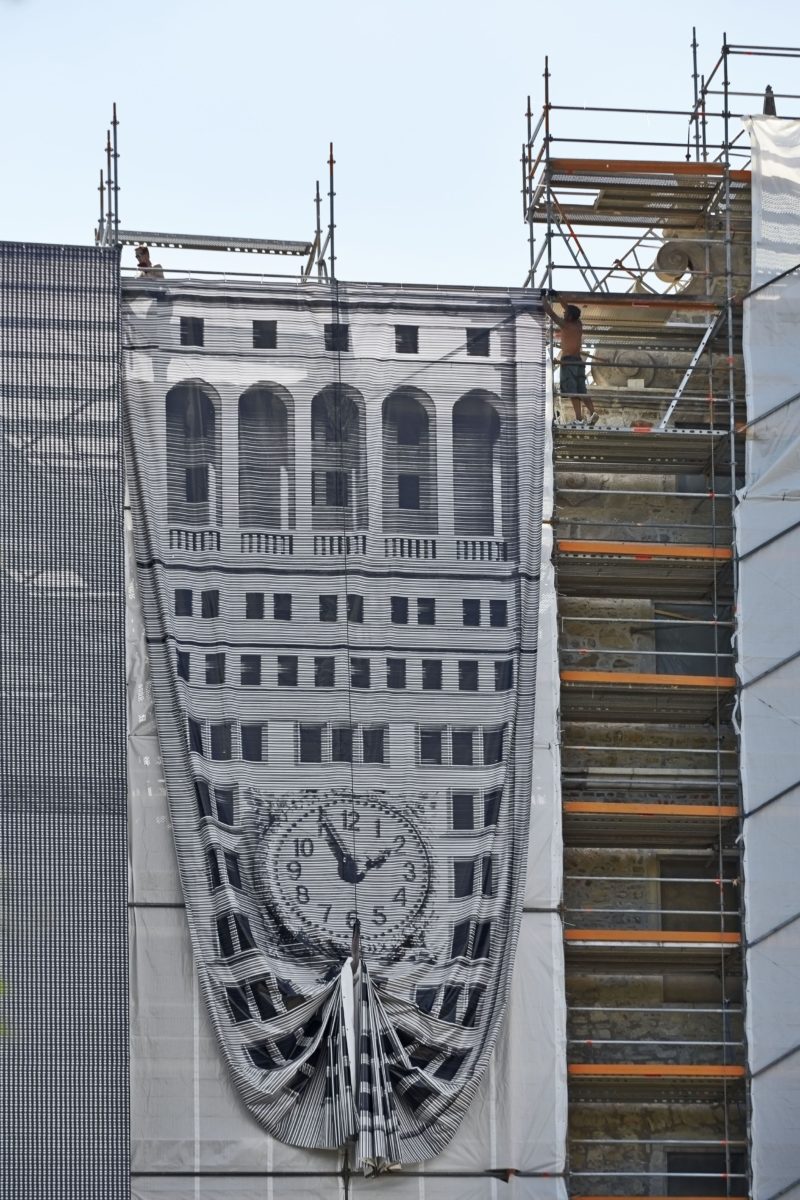
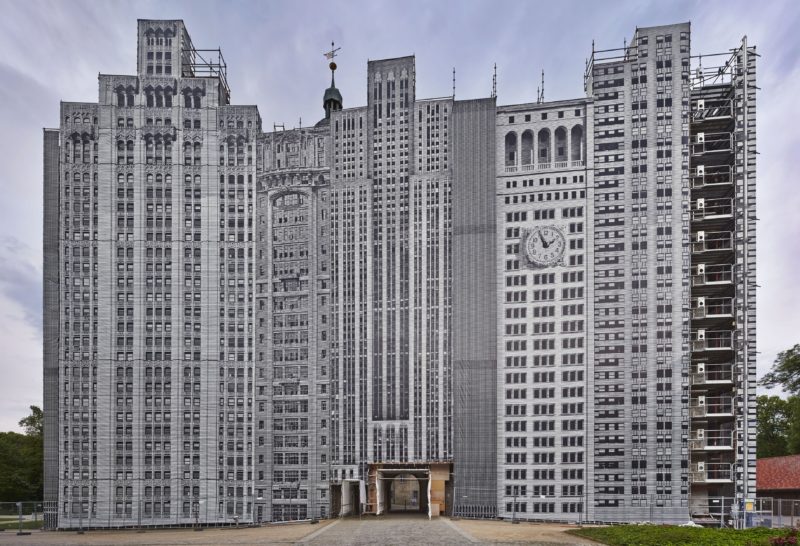
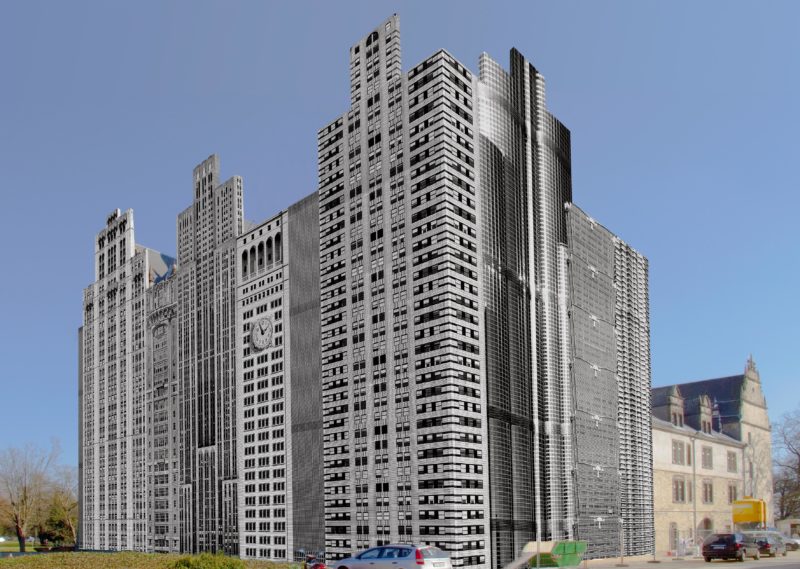
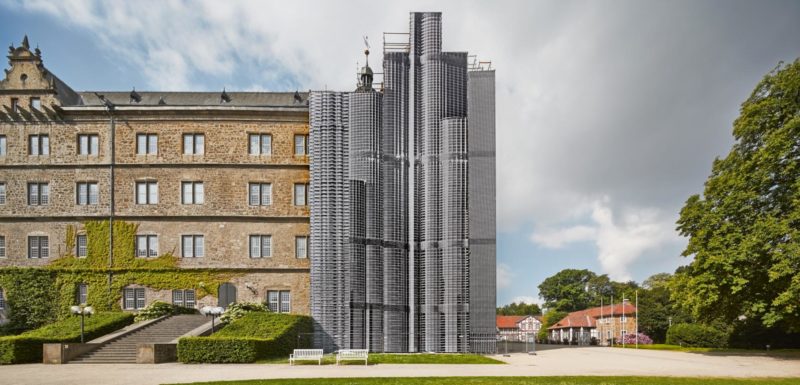

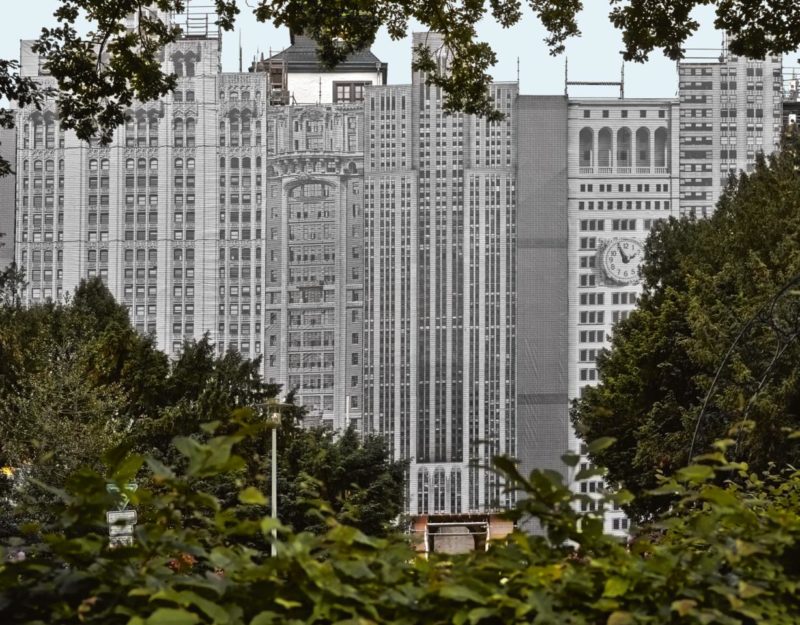
Framework
In Framework, Pousttchi tries to address some tough questions about architecture and its interaction with the environment. The artist applied half-timbering elements onto Schirn Kunsthalle, a postmodern building completed in 1986 near Main River.
She studied photo archives and spent more than one year photographing the building as well as its surroundings. Pousttchi then took existing elements from the nearby half-timbered buildings – the Wertheym and the Schwarzer Stern out of their original context and then recombined them in a repetitive structure with a little of a Middle Eastern touch to it. The white frieze was then applied to all the windows (sixty-four) of the building’s entrance and sixty-seven windows of the whole frontage using photo prints.
With Framework, Pousttchi created a mystifying situation. The photographic elements of the building’s façade 8, which were originally entirely constructional elements, are converted into pure décor. And seeing this applied to a post-modernist structure is rather strange to some people, but it might be a convincing statement to others.
Final Thoughts
Throughout her career, Pousttchi has been trying to address important questions about architecture and the environment, such as ‘how does architecture shape its environment? ‘What kinds of changes occur in urban surroundings?’ She challenges those questions through videos, photographic works, site-specific installations, and sculptures.
Explore nearby
Wolfsburg Castle, Wolfsburg
 Brad Downey's McDonald’s mural92 km away
Brad Downey's McDonald’s mural92 km away Antony Gormley's Horizon Field HamburgExhibition ended (dismantled in 2012)134 km away
Antony Gormley's Horizon Field HamburgExhibition ended (dismantled in 2012)134 km away Joseph Beuys' 7000 Oaks154 km away
Joseph Beuys' 7000 Oaks154 km away Marta Minujín's Parthenon of BooksInstallation ended (dismantled in 2017)154 km away
Marta Minujín's Parthenon of BooksInstallation ended (dismantled in 2017)154 km away Apichatpong Weerasethakul's ghost sculptureInstallation ended (dismantled in 2012)154 km away
Apichatpong Weerasethakul's ghost sculptureInstallation ended (dismantled in 2012)154 km away

